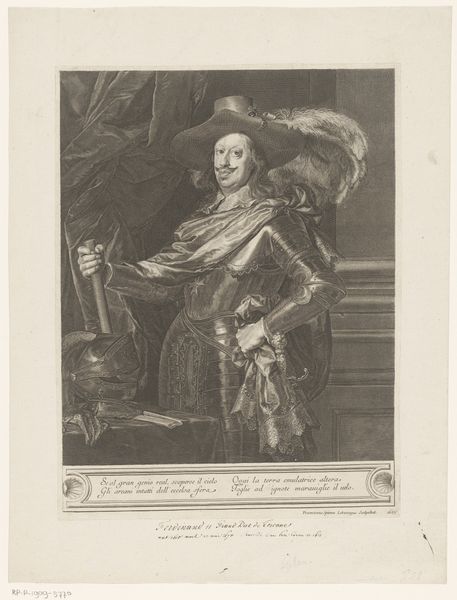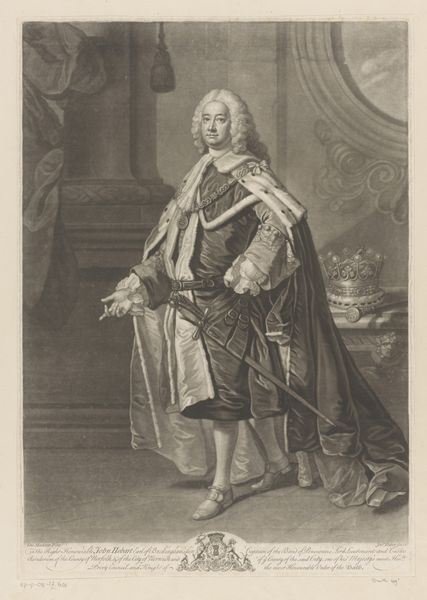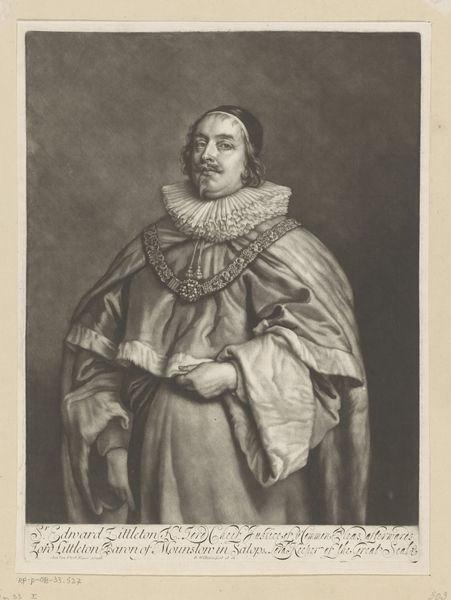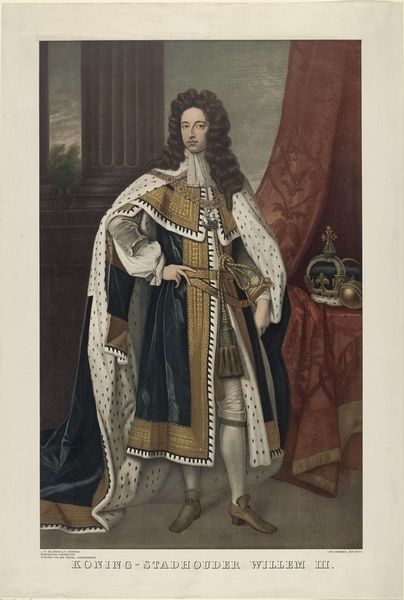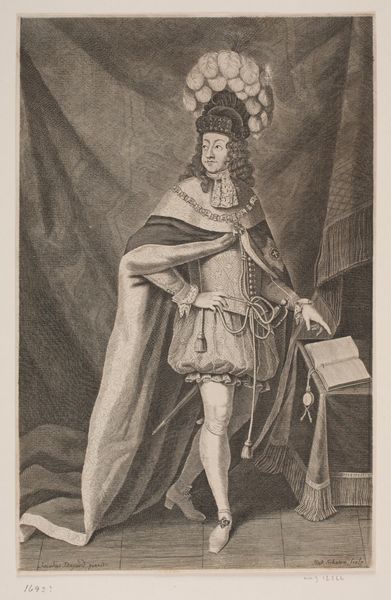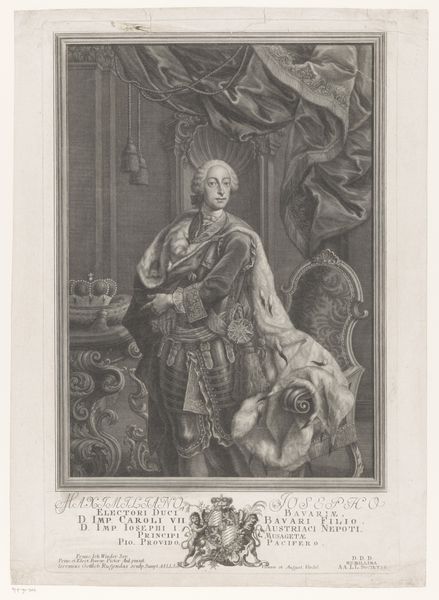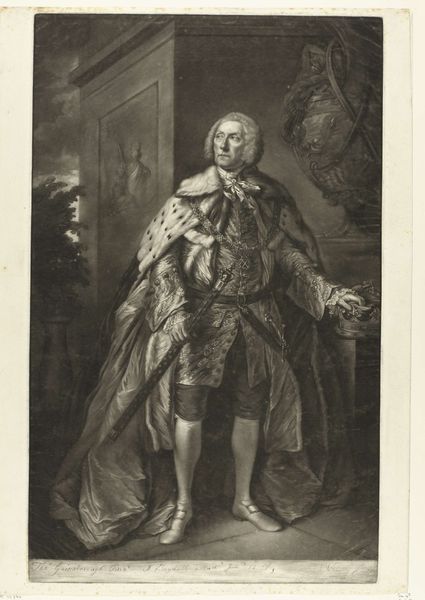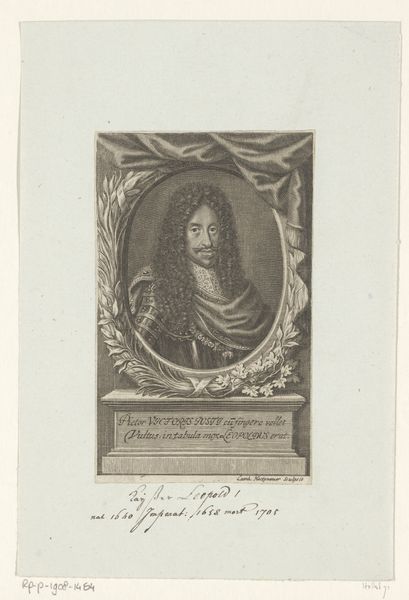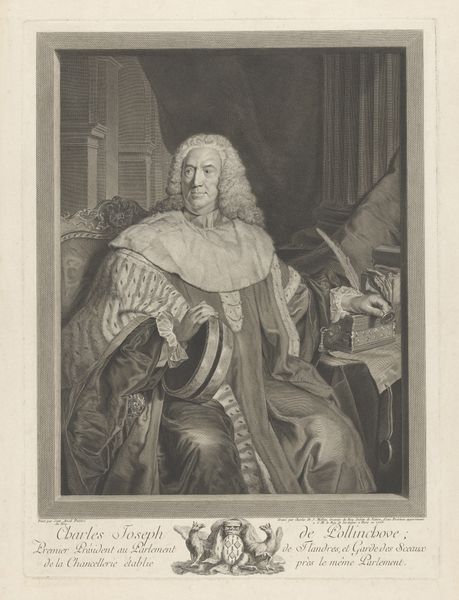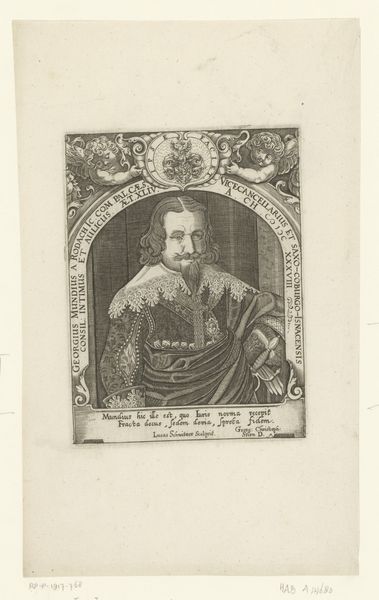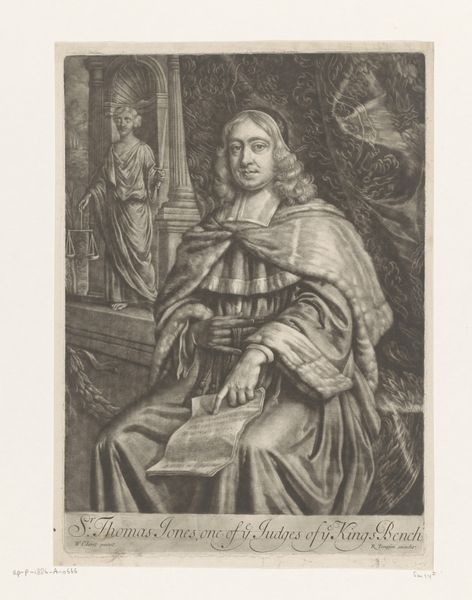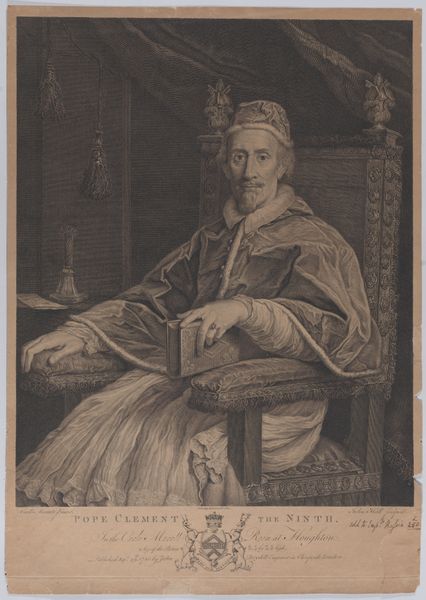
Dimensions: height 538 mm, width 356 mm
Copyright: Rijks Museum: Open Domain
This print of Charles I, King of England, was made by Robert Strange using engraving, a technique that demands careful labor. The artist would have used a tool called a burin to manually carve lines into a metal plate. These etched lines then hold ink, which is transferred to paper under immense pressure. What we see here, the tonality and detail, comes directly from the artist's skilled hand. The very labor-intensive process of engraving stands in stark contrast to the wealth and power represented in the image. Charles I, draped in ermine and velvet, embodies aristocratic privilege. Prints like this one were luxury goods, yet they also brought the image of the monarch into more homes than an original painting ever could. So, the work makes us think about the intersection of craft, class, and the controlled dissemination of propaganda. When we consider the materials and making of an artwork, we see it in a richer social context, and the lines between craft, design, and fine art become more blurred.
Comments
No comments
Be the first to comment and join the conversation on the ultimate creative platform.

